27/12/2023
Best Wireless and Bluetooth Drawing Pen Tablets
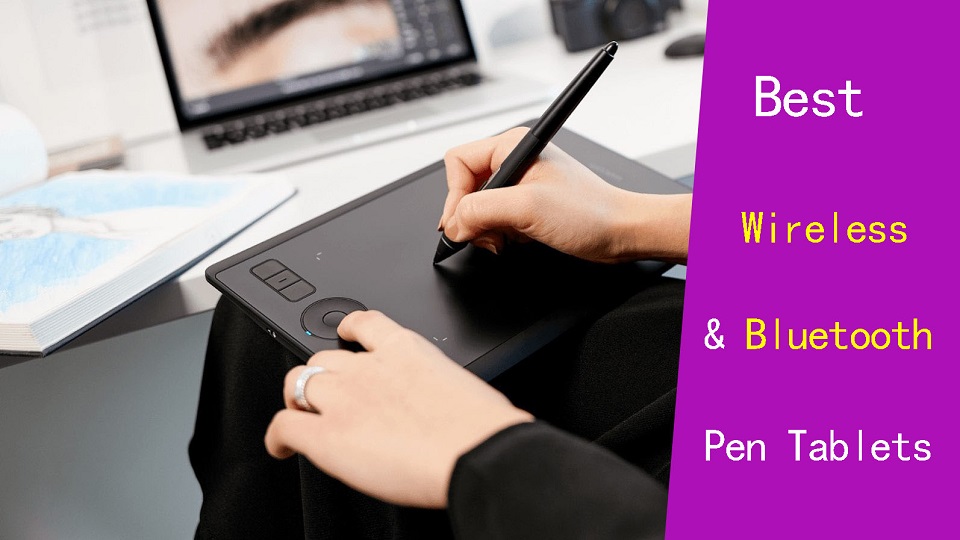
Wireless drawing tablets are great if you're trying to make a desk looks cleaner, or like drawing with your tablet on your lap.
Mobile productivity hounds who want gear that's ready for travel swear by them, too, and some models are able to be wireless, carried around by itself, and even let you draw directly on the screen.
Thanks to hyper-fast connections and long-lasting batteries, you no longer have to sacrifice some more practical functions to enjoy the freedom of using a wireless tablet.
In fact, they're so fast and reliable nowadays that even the hard-to-please artist crowd is beginning to embrace them.
These days, the pen tablet market offers plenty of wireless options, from basic non-screen units to standalone display tablets.
If you are a beginner and don't have much expertise, picking the best wireless bluetooth drawing tablets for your needs can be difficult.
In this article, we provide all the buying advice and deep-dive reviews you need to select the right wireless drawing tablet.
We've spent hours and hours researching each model, surfing the web, just to bring you a list of the very best wireless graphic tablets around.
What are the two types of wireless drawing tablets?
Bluetooth pen tablets connect with the device over Bluetooth completely wireless connection no need for a dongle.
But some wireless tablets work on 2.4 GHz radio frequency they need a dongle to insert into the USB port of the connecting device.
2.4GHz vs Bluetooth Connection: Which is Better or faster?
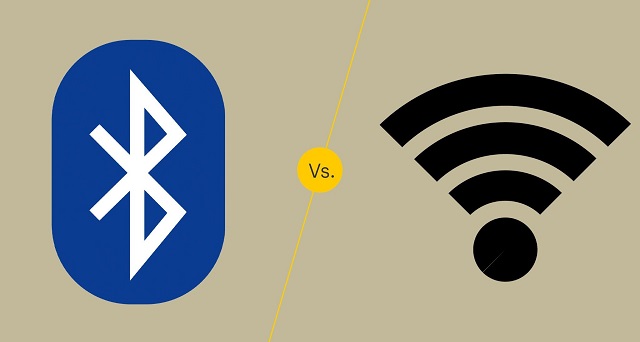
The answer depends on what the connection is used for, and what version of Bluetooth you're talking about.
2.4GHz will usually offer lower latency than Bluetooth but use more power.
Bluetooth technology has been refined over the years, but the older versions of it are still used for some applications. The different versions are numbered with the latest version being Bluetooth 5.
The later versions have significantly increased the transmission range as well as the speed and capacity of earlier versions.
In general, when shopping for Bluetooth drawing tablets, it's best to look for tablets using the latest version of Bluetooth.
What are the advantages of a wireless pen tablet?
Wireless drawing tablets are a great way to boost your productivity and comfort levels at work or home.
One of the main advantages of wireless pen tablets is that they eliminate the need for cables and wires that can clutter your desk and limit your movement.
With wireless connection, you can position your tablet wherever you want, as long as they are within the Bluetooth or USB range of your computer.
This gives you more flexibility to adjust your posture, angle, and distance according to your preferences and needs. You can also easily move your devices around if you need to change your location or work on different surfaces.
With no wires, there's little risk of damage or interference due to any accidental pulls or trips over cables!
And it is much easier to transport, since you don't need to worry about pesky wires and cables. This makes it perfect for people who need a mobile solution, such as students, business people, and more.
In addition, The wireless pen tablet also comes with a usb cable for easy plug-and-play in case your device doesn't have Bluetooth or the tablet itself is out of battery.
What are the disadvantages of using a wireless drawing tablet?
Wireless tablet require batteries, which can run out of juice at the most inconvenient times.
Compared to a wired tablet, Wireless tablet can sometimes have a slight delay in their response time, which maybe a disadvantage in situations where precise movements are required.
Wireless tablet can be susceptible to interference from other wireless devices, which can cause the tablet to malfunction or become unresponsive.
The final disadvantage to consider before purchasing a wireless tablet is that there are limited options on models.
Wireless tablets are still rather rare to the market so many of them are expensive and contain a lot of extra features that are not needed.
How to connect a bluetooth drawing tablet to a computer?
To connect your bluetooth tablet to a computer, first, ensure it has enough batteries.
Then, turn on the tablet and activate pairing mode, usually by pressing the "connect" or "pair" button.
Next, on your computer, go to the Bluetooth settings, search for available devices, and select your tablet from the list.
How to choose a wireless drawing tablet?
Apart from introducing a couple of new factors that you need to pay attention to (namely, connectivity and battery life), picking out the best wireless drawing tablet isn't all that different from choosing best pen tablet overall.
Wireless tablets that connect via a USB receiver or dongle can only connect to a computer or device if it has a USB-A port.
Bluetooth connectivity on the other hand does not require any dongle or extra receiver and can therefore easily connect to other Bluetooth-enabled devices without the need for any ports.
Likewise, battery life is another consideration. Be careful about what wireless tablet model you choose and how long their rechargeable lithium batteries last.
What are the 3 main types of graphic tablet? Does it support wireless connection?
In the world of graphic tablets you have three kinds: pen tablets without display, graphic tablets with display, and standalone drawing tablets.
1. graphic pen tablets
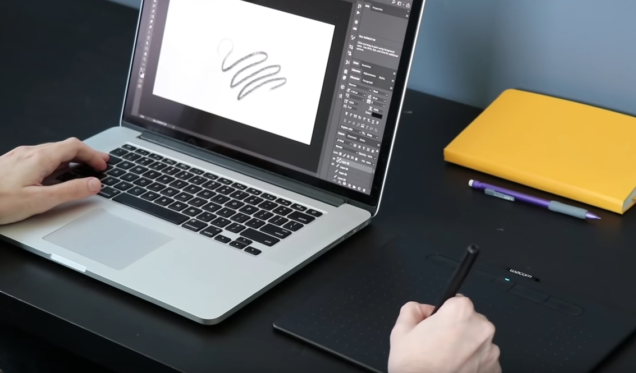
A non-screen graphic tablet consists of a pen and a plastic pad, with which you can perform various manipulations with information in various art programs.
Since your hand is on the tablet and your eyes are on a computer monitor, So screenless tablets are more difficult to use and take longer time to get used to.
They are a really good option for someone getting started in digital art. The main reasons for this is that they are much more affordable and quite durable.
This type of tablet has Wireless compatibility, You can often choose between a wireless or a wired only model.
Some of the most popular options include: Wacom Intuos, Huion Inspiroy, and XPPen Deco.
2. Pen tablets with screen
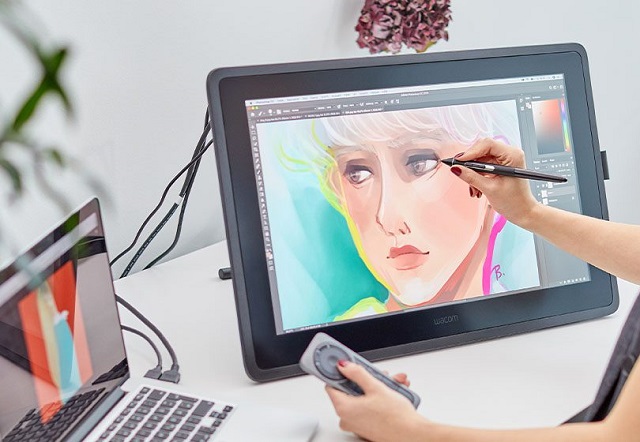
There are graphics tablets with screen available in the market. These devices are commonly referred to as "pen displays".
They combine the features of a traditional graphics tablet with the convenience of a built-in screen, allowing you to draw or design directly on the display.
There is a much smaller learning curve and it feels more natural from that perspective. However, Even if they have a display, you still need to hook them up to a computer, so not portable.
They are essentially secondary computer monitors you can draw on. These tablets doesn't have computing units like processor, RAM, storage, battery, and OS inside.
No such "wireless pen display" exists yet, as the amount of data that would need to be transferred wirelessly to get a FHD~4K display to operate unwired from an actual computer is too great.
At the top of this category are the Wacom Cintiq, Huion Kamvas and XPPen Artist. They come in all sorts of sizes with all sorts of options. Every extra, whether it be a bigger screen, or higher resolution functionality, will drive up the price point.
3. Standalone Drawing Tablets
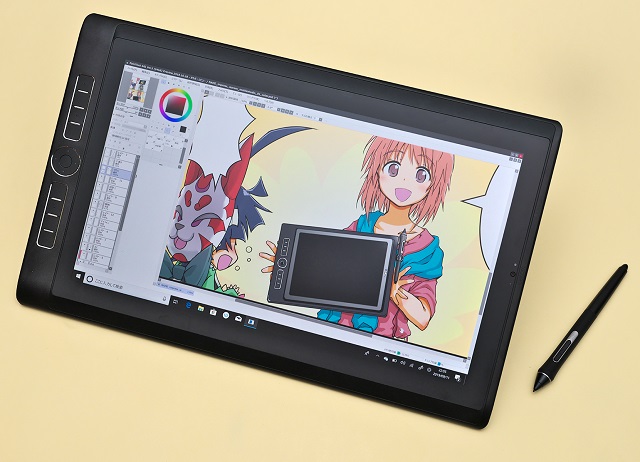
They are powerful and costly machines that act as a full workstation all their own, allowing you to draw without the aid of any extra devices.
Brands like Wacom and Huion offer Dedicated all-in-one tablet workstations (Windows 11): Wacom MobileStudio Pro 13/16, and Huion Kamvas Studio 16 — essentially display tablets with built-in PCs.
Regular consumer tablets have come a long way, Apple's ipad Pros (iPad OS), Samsung's galaxy tabs (Android), and Microsoft's Surface Pros (Windows 11), with its special attention to artistic endeavors - support pen input, has garnered a passionate following.
All these independent drawing tablets can be used wireless, and portable, making them a convenient option for artists who want to create digital art while traveling or away from a computer.
The problem is the software available is limited - especially on android and ipad os, super expensive price, the pressure points on regular consumer tablet are not as good as professional ones.
10 Best Wireless drawing tablets
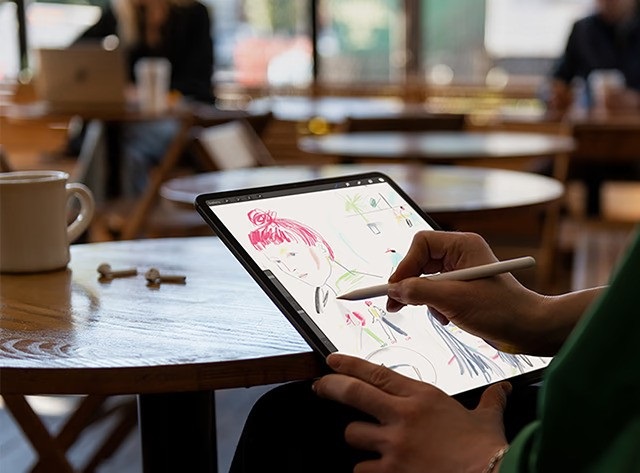
Here are our top 10 picks for the best wireless drawing tablets with or without a display built in:
1. Ugee S640W
2. XP-Pen Deco MW
3. XP-Pen Deco Pro MW
4. Huion Inspiroy Dial 2
5. Huion Inspiroy Q11K V2
6. Wacom Intuos
7. Wacom Intuos Pro
8. iPad Pro
9. Samsung Galaxy Tab S9
10. Surface Pro 9
Conclusion
Want to work or play without cables getting in the way? Wireless graphics tablets are becoming increasingly popular due to their mobility and flexibility.
These 10 best Wireless tablets are in different price brackets. Each has particular benefits and a lot will depend on your budget, preference, work type and skill level.
If you have the money for it, wireless standalone tablets with screen would be the best, most natural-feeling option for a mobile solution.
It doesn't matter if you pick the iPad Pro, Samsung galaxy tab or the Surface Pro 9, you will have a wonderful machine to work with.
In case you're a beginner or an intermediate-level artist, sticking to the budget wireless screenless pen tablets is probably a good idea.
They are unbelievably affordable and will still allow you to create artwork as good as anything created with a super expensive tablet.
It's up to you to decide which one best suit you.
Source: https://pctechtest.com/best-wireless-bluetooth-graphic-ta...
11:10 Publié dans Cinéma, Cuisine, Loisirs créatifs | Lien permanent | Commentaires (0)
03/11/2023
Wacom Cintiq 22 vs Huion Kamvas 22 Plus Comparison
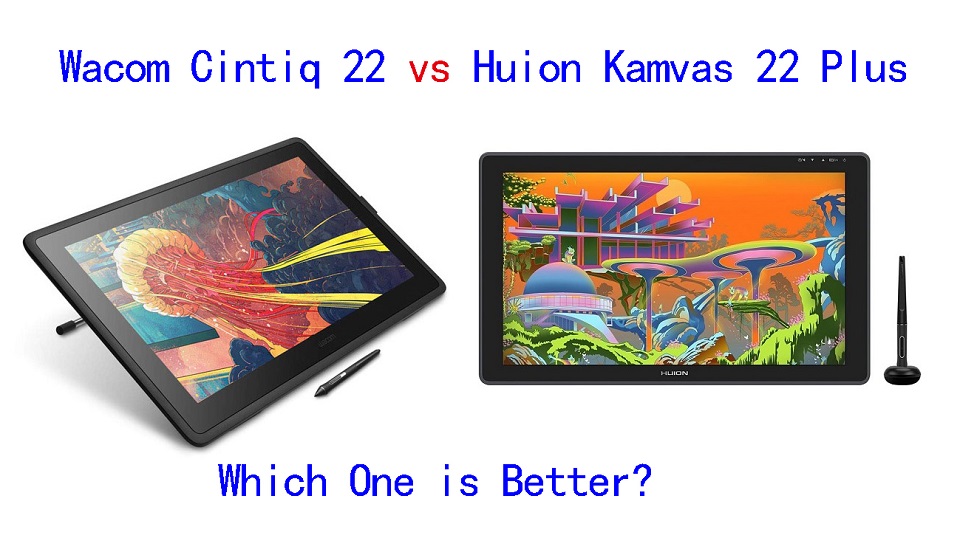
If you're not new to the digital art world, you're probably already aware that graphic tablet with display is a good tool for an artist.
These display tablets are unbelievably cool, allowing you to use a stylus and work directly on your artwork. Even traditional artists are surprised by how easy, nature, accurate and intuitive the process is for them.
Compared to sizes of 15.6-inch or smaller, the 22-inch gives you a physically larger drawing area that allows you to create more lengthy pen strokes and more comfortable arm movements as you draw.
If you are looking for a quality 22-inch pen display that has all the necessary drawing features you need while still being very economical, the Wacom Cintiq 22 and the Huion Kamvas 22 Plus are the two best and most popular choices.
One may be wondering which one of the two to get. For the most part, both devices are similar, like screen size, resolution and pressure sensitivity, but there are some differences here and there.
Keen on one or the other? We compared Wacom Cintiq 22 vs Huion Kamvas 22 Plus, divided all pros and cons of each model, describe all features to help you find the best device.
Brand Comparison: Wacom VS Huion
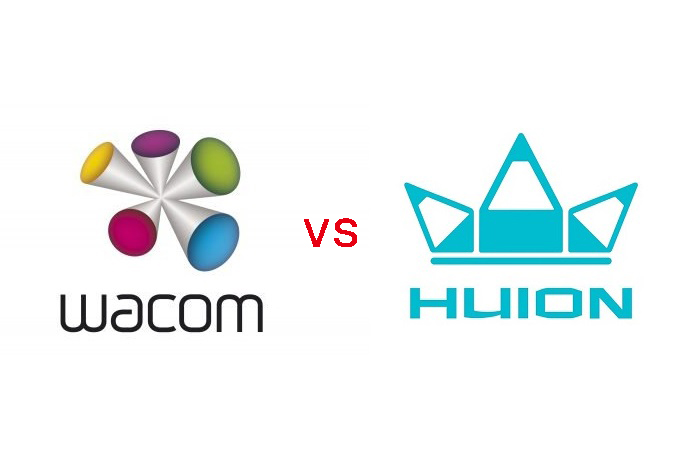
Wacom is the industry leader and standard. They have been producing high-quality drawing tablets for artists since its foundation in 1983.
If you weren't worried about price, you'd want a wacom and you wouldn't get remorse anyway because you'd own the best possible tablet.
On the other hand, Huion is a newcomer, founded on 2011. It is something of a market leader in terms of budget tablets, so there's plenty to cover.
Huion tablets are certainly becoming more and more popular. They are typically much cheaper than an “equivalent” Wacom and – on paper, at least – do the same things.
Features Comparison: Wacom Cintiq 16 vs Huion Kamvas Pro 16
For detailed information about Cintiq 22 vs Kamvas Plus 22comparison, you can find below:
Build Quality and Design
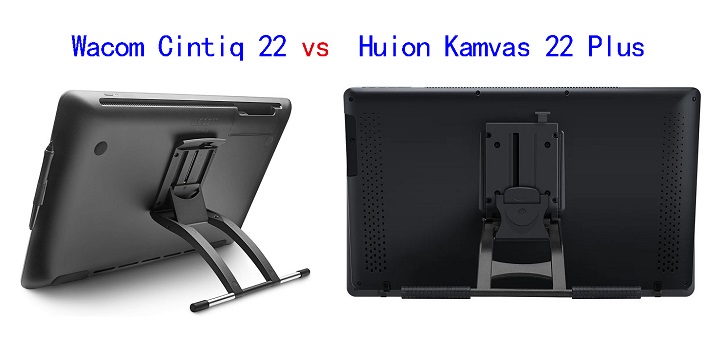
Huion and Wacom both take quite a minimalist approach with the design of their tablets.
If we compare the Huion Kamvas 22 Plus and the Wacom Cintiq 22, we'll see that both are mostly screen, without function buttons.
As for appearance, Both Tablets comes with a black plastic body, Build quality is solid and feels well made.
Both tablets also come with an adjustable stand that allows you to set it to your preferred height.
The Wacom stand offers angle adjustment from 16° to 82°, while the Huion stand provides angle adjustment of 20° to 80°.
In addition, With both devices, you can remove the stand to reveal a VESA mount, which gives you the option to mount an arm.
Both drawing tablets are big and bulky devices that are difficult to carry around.
But there is some significant difference in weight– the Huion Kamvas 22 Plus weighs 3.9kg including stand, while the Wacom Cintiq 22 weighs a considerably more hefty 5.9kg with its stand!
Screen Quality
Both devices offer the same screen size of 21.5-inch, as well as the same 1920 X 1080-pixel resolution.
We must say that these specifications perhaps have room for upgrades such as 2.5K or 4K resolution for a higher pixel density and clarity.
In terms of color gamut there is some significant difference – the Cintiq 22 features a color accuracy of 96% sRGB, while the Kamvas 22 Plus offers a hugely impressive 140% sRGB color gamut.
A wider color gamut will provide more accurate and vibrant colors, which is especially important for artists and designers who need to work with a wide range of colors.
This is down to Huion's new Quantum Dots Technology of QLED Panel, which also allows the tablet to boast a hugely impressive 1200:1 contrast ratio, while Cintiq 22 has an IPS panel with 1000:1 contrast ratio.
Since Wacom Cintiq display is calibrated out of the box, so the colors looks accurate. As for Huion Kamvas, it has a relatively inaccurate color calibration out of the box.
However, you can always manually tweak the colors by going through the OSD options of Huion. And If you're willing to do a bit of color calibration on setup, it's absolutely class-leading.
Screen Technology
Cintiq 22's screen is not laminated, which is cheaper to manufacture. Because there is a gap between the active screen and its top layer, this creates a parallax issue.
Kamvas 22 Plus has full lamination screen, which reduces the air gap, the parallax is minimal, resulting in a lag-free drawing experience.
Drawing Surface
The Kamvas 22 Plus uses etched glass on the screen, which is more scratch-resistant than the matte film that the Cintiq 22 uses.
Both type of textured screen is super nice and its really almost glare free and feels a bit rougher, somehwere in between glass and paper.
This texture helps give resistance against the pen while drawing to make it easier to control your strokes.
Stylus Pen
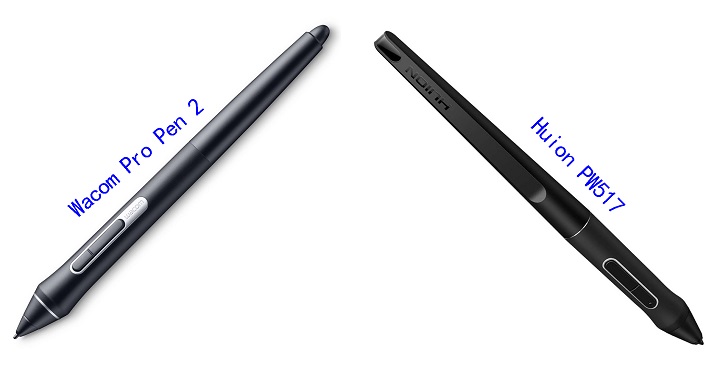
For the most part, the pens of the two devices are quite similar that is thickest on the area most proximal to the tip and tapers towards the other end.
They both have 2 customizable buttons, and a rubber grip for better and comfortable use. They are both battery-free, and requires no charging at all.
However, the wacom Pro Pen 2 that comes with Cintiq 22 has an extra eraser on the top end, which allows you to switch to the eraser tool the same way you could do with regular pencils.
On paper the two pens are very similar. Both Wacom and Huion PW517 stylus boast 8,192 levels of pressure sensitivity and ±60° tilt detection. This assures excellent accuracy in making manual inputs.
However, and with the caveat that this is subjective, the Wacom stylus still just feels better in use, with a smoother action in the hand.
Wacom Pro Pen 2 has a lower initial activation force where it better detects the lighter pressure! Much better than Huion stylus, The tracking is impeccable, no jitter at all.
Programmable Buttons
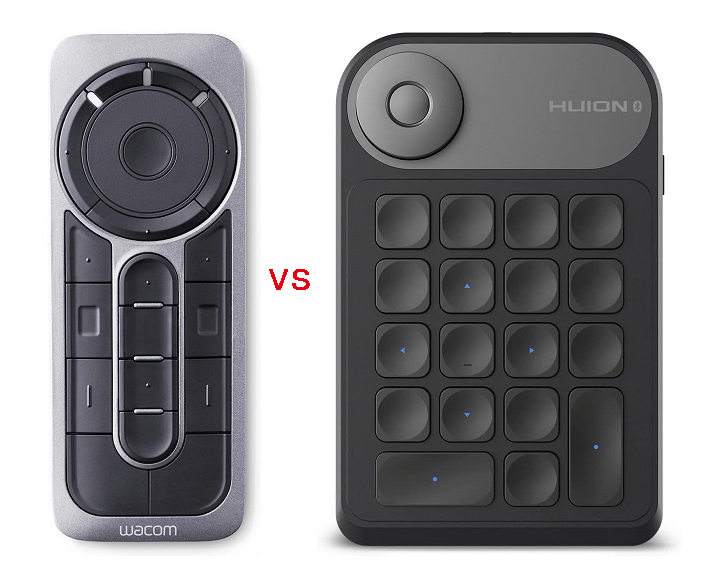
As mentioned above, neither the Cintiq 22 nor the Kamvas 22 plus comes with programmable shortcut buttons.
If you are someone who uses a keyboard for in-application shortcuts, this is not really a big deal .
If you want button control, you can pick up a Wacom Expresskey Remote for the Cintiq 22, which gives you 17 programmable buttons and a touch ring.
It connects wirelessly via 2.4Ghz to the computer and can work for around 160 hours on 2 hours of full charge.
The Kamvas 22 Plus also have a comparable accessory, the Keydial Mini K20, which includes 18 programmable buttons and a mechanical dial.
It feature with the Bluetooth 5.0 wireless function, And Its 1200mAh battery ensures continuous working for about 100 hours.
Note that both Expresskey Remotes are not included in the box and needs to be purchased separately.
Connectivity
Both tablets are not a standalone drawing tablet, so they needs to be connected to a computer.
Cintiq 22 connects to a computer via 3 separate cables for power, USB, and HDMI connections.
The Kamvas 22 Plus comes with a somewhat interesting power cable which Huion calls the 3-in-1 cable.
The cable comes with a USB-A, HDMI, and a port for the power supply which all converge into a single USB-C input plug for your computer.
Another difference to the Cintiq 22 is the addition of a USB-C to USB-C cable so you can attach your compatible android phone or laptop.
Compatibility
The two devices in this comparison can work seamlessly with devices running on Windows, or macOS, and supports various mainstream drawing and designing software.
However, Wacom Cintiq 22 lacks the Android connectivity that Huion offers on its Kamvas 22 Plus tablet, so if you use Android devices, this is worth bearing in mind.
Drivers and Software
Before drawing on the screen, you need to download the drivers from their official website, install them and then you are good to go.
The tablet driver software interface will detect the pen display and open the available options for you.
Wacom drivers are more stable and a bit more “plug-and-play” in terms of setup, with more options to speed up and simplify your creative experience, including customizable pen gestures and on-screen pen and touch controls.
Huion drivers may encounter more issues, and not as well as wacom in quality. But it still allows you to adjust your personal preferences on pressure sensitivity, tilt, and button mapping, all of which required only a few minutes of effort.
Accessories
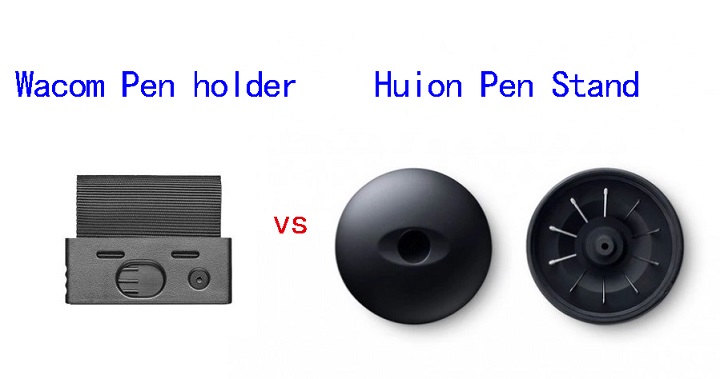
Despite being cheaper than the Cintiq 22, the Huion Kamvas 22 Plus comes with more accessories, such as extra black artist drawing glove, pen nibs, etc.
The Kamvas 22 Plus comes with a circular pen holder. It can hold your pen in an upright or flat position.
The pen holder also doubles up as nib storage, which houses 10 spare pen nibs. This can last you quite a while.
The Cintiq 22 comes with a simple fabric loop to hold the pen. The loop is attached to the side of the tablet. It also houses the 3 extra pen nibs.
Price
Price is one of the main reasons why so many artists are excited about the Huion Kamvas 22 Plus. It will cost you $549.00.
Compared to Kamvas 22 Plus, the Cintiq 22 is 1.2 times more expensive at $1299.95. But it still has the lowest price Wacom has ever offered for a drawing display of this size.
Additionally, If you can tolerate a non-laminated display, narrower 120% sRGB color gamut, a matte screen film instead of etched glass, then you can save extra $100 on Huion Kamvas 22 (basic, non plus version).
Conclusion
Both the Cintiq 22 and Kamvas 22 Plus are good drawing device for those who want a large screen at a budget-friendly price.
Wacom Cintiq 22 is more expensive, but still has the best pen and drawing experience. For most artists, Wacom's main feature is longevity and dependability.
But if your budget is tight, get a Huion Kamvas 22 Plus, It's more budget-friendly and offers great value for the price.
You won't go wrong with any of them, as they offer all you need to create good artworks. All depends on your levels of skill, preference, needs and budget.
Source: https://pctechtest.com/wacom-cintiq-22-vs-huion-kamvas-22...
15:41 Publié dans Loisirs créatifs, Loisirs et Culture | Lien permanent | Commentaires (0)